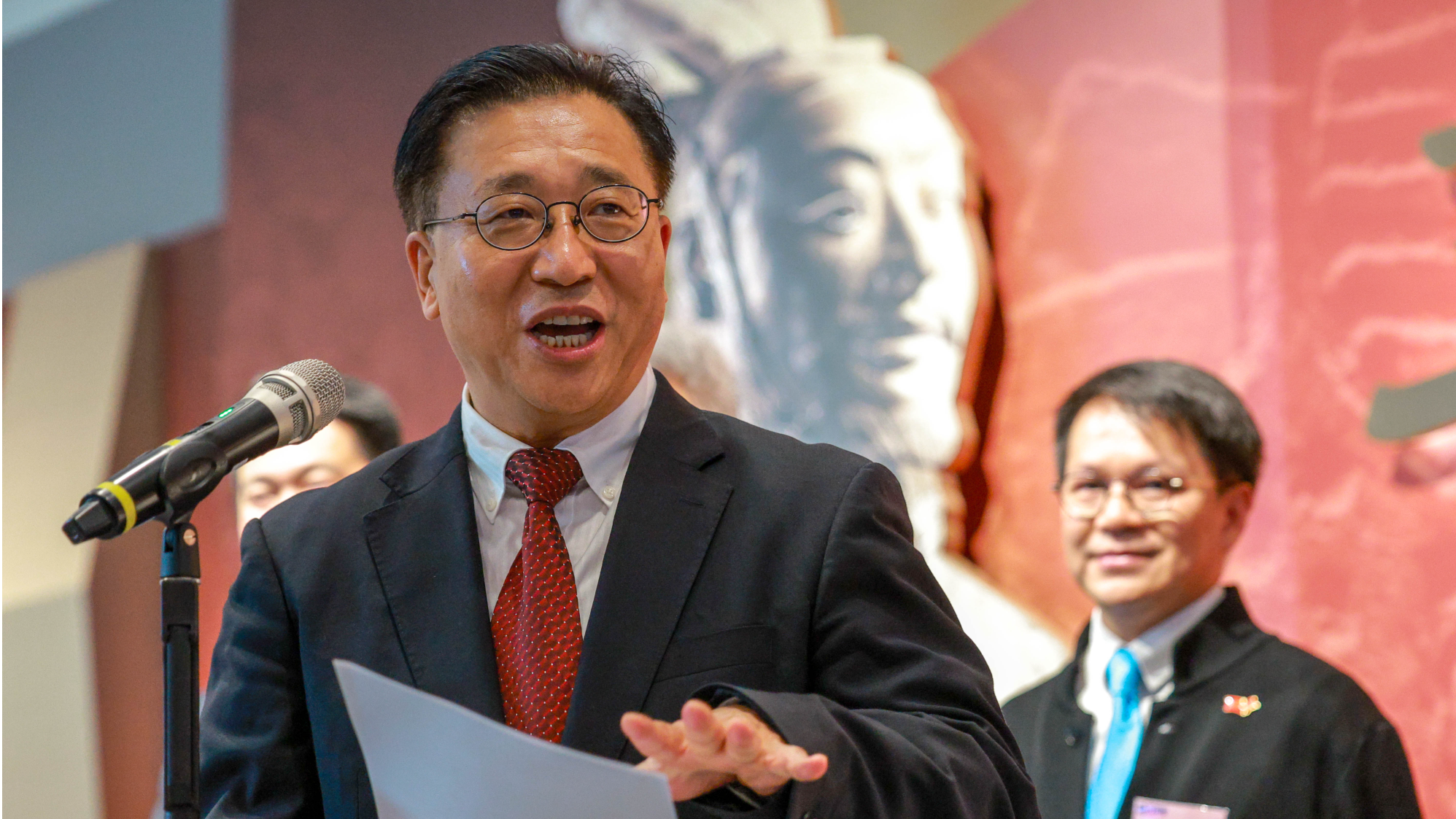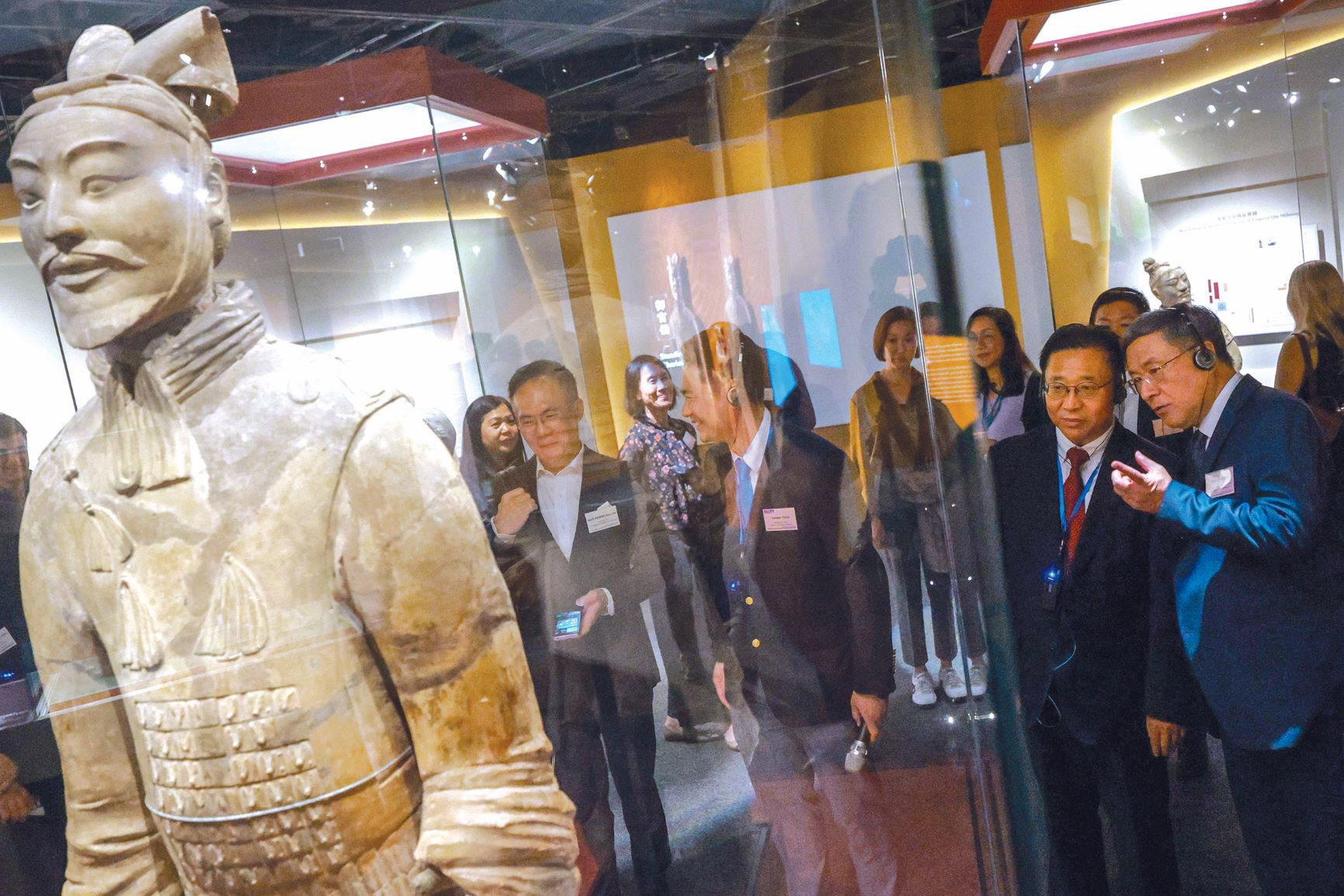
Hong Kong has the potential to enhance cultural exchanges between East and West, benefiting cross-cultural understanding in an era of geopolitical tensions, international business leaders said on Tuesday after viewing a Chinese history exhibition.
The Great Unity: Civilisation of the Qin and Han Dynasties in Shaanxi Province exhibition at the Hong Kong Museum of History — running from April 16 through July 7 — showcases the rich heritage of China’s two foundational dynasties, which existed between 221 BC and 220 AD.
Jointly organized by the museum and Shaanxi Cultural Heritage Promotion Center, the exhibition — to which admission is free — features a range of priceless national treasures, including three life-sized terracotta warriors from Emperor Qin Shi Huang’s mausoleum, and has been drawing large crowds.
READ MORE: Global exhibition on Chinese heritage lands in HK, Macao
A special viewing, organized by the Commissioner’s Office of the Ministry of Foreign Affairs in the Hong Kong Special Administrative Region and the Democratic Alliance for the Betterment and Progress of Hong Kong (DAB), was held on Tuesday, with foreign consuls and heads of business chambers in the city invited to enjoy the charms of Chinese culture.
Inaki Amate, chairman of the European Chamber of Commerce in Hong Kong, praised the exhibition as an illustration of Hong Kong as an international cultural platform.
“We're extremely happy to see more of this in Hong Kong — it helps attract global tourists while sharing China’s historical background,” he said.
Amate connected the exhibition’s theme to contemporary issues. He said that understanding the Chinese way of thinking involves learning how the culture has shaped its people’s values — a major objective of the exhibition.
“The tariff war helps no one. Today’s world needs more collaboration,” he said.
Joseph Chaney, partner at strategic communications firm New Narrative, praised the exhibition for showcasing Emperor Qin Shi Huang’s lasting legacy in unifying and standardizing China’s writing and measurement systems.
The exhibition clearly shows how these ancient reforms still influence China today, said Chaney, who advises multinational corporations on their communications strategy. “It’s very informative, and I am grateful to have seen it today,” he said.

In his keynote address, Commissioner of the Ministry of Foreign Affairs in the Hong Kong SAR Cui Jianchun emphasized the profound significance of national unification, describing it as the heartfelt aspiration of all Chinese people.
Cui said he recognizes Hong Kong’s unique role in advancing these efforts, commending both the SAR government and local organizations for their contributions to national unity.
Cui said that unity is the foundation of China’s development and global cooperation, and called for stronger regional and international solidarity.
Concluding on a cultural note, the commissioner warmly invited attendees to visit Xi’an, the seat of the terracotta warriors, praising its rich historical legacy which continues to shape Chinese civilization today.
READ MORE: Exhibition in HK showcases glories of Chinese civilization
Warner Cheuk Wing-hing, deputy chief secretary for administration, said that the Hong Kong SAR government actively supports cultural exchanges through initiatives like the Chinese Culture Promotion Office, which collaborates with institutions such as the Hong Kong Museum of History to showcase China’s rich cultural heritage.
The exhibition is the second instalment in the General History of China series, supported by the office.
The inaugural program was the Ancient Civilisation of the Xia, Shang and Zhou Dynasties in Henan Province exhibition, held last year.
Contact the writer at lilei@chinadailyhk.com


